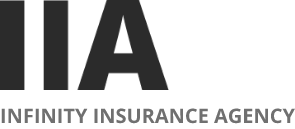Stunning red rocks, hot springs galore, and the sparkling lights of Las Vegas are just a few of the things that call Nevada home. According to the Nevada Department of Motor Vehicles, the state contains 2.3 million drivers and more than 2.7 million registered vehicles. With so many cars on the road, the importance of proper personal auto insurance cannot be overlooked. Infinity Insurance Agency, Inc. (IIA) is proud to serve the residents of Nevada and provide quality coverage.
Car insurance in Nevada is not optional and by law, liability insurance is required on all registered vehicles. Obtaining Nevada auto insurance is an important part of being a responsible driver. A personal auto insurance policy can help provide financial relief from the damages and/or injuries incurred from a car accident, collision, theft, or other losses. Personal insurance policies can offer a wide range of coverage options, so you can choose a policy that works for you.
Looking to discover the ins and outs of Nevada auto insurance with IIA? Read on!
Auto insurance requirements in Nevada
As per the Nevada DMV, the minimum liability insurance requirements are as follows:
- $25,000 for liability for bodily injury or death of one person in any one accident
- $50,000 for liability for bodily injury or death of two or more persons in any one accident
- $20,000 for liability for injury to, or destruction of property of others in any one accident
This is commonly represented as a split limit of 25/50/20. An insurance company authorized to do business in Nevada must validate your coverage electronically. You must be able to present evidence of insurance on a printed card or on a mobile device to register your vehicle in Nevada.
Please note that this is only the minimum required liability coverage in Nevada. Depending on your unique insurance needs you may opt for higher liability limits and optional policy add-ons such as collision, comprehensive, or uninsured motorist coverage.
IIA can work with you to explore a variety of different coverage options including:
- Collision coverage
- Comprehensive coverage
- Uninsured motorist coverage
Penalties for driving without proof of insurance
Driving without proof of insurance is considered a misdemeanor in Nevada. The penalties for driving without coverage range from fines to license suspensions in addition to any penalties imposed by a court following a law enforcement citation. Please note that there are no grace periods for driving without insurance in Nevada and the severity of the penalty will vary depending on the length of time you have driven without insurance. This information can be tracked by both the Nevada Liability Insurance Validation Electronically (NVLIVE) system and law enforcement.
The following are the posted penalties as of 2024 for driving without the minimum insurance for 1-30 days:
- 1st Offense - $250 fee
- 2nd Offense within 5 years - $500 fee
- 3rd Offense within 5 years - $750 fee, SR-22 insurance, and suspension of license for a minimum of 30 days
Is Nevada considered a no-fault state?
Nevada is considered an ‘at fault’ or tort state, meaning that the person who is responsible for the accident is responsible for covering the other parties' losses incurred from injuries and/or property damage resulting from the accident. Drivers in Nevada can also file lawsuits to seek compensation for medical expenses resulting from an accident.
How much does auto insurance cost in Nevada?
Looking for low-cost auto insurance in Nevada? The cost of your coverage in Nevada will vary depending on several factors including zip code, driver’s age, credit history, and vehicle type. According to data available from Quadrant Information Services, on average Nevada drivers pay $971 and $3,074 annually for minimum and full coverage policies respectively. This amount is significantly higher than the national average for minimum and full coverage which comes to $639 and $2,348 respectively.
One of the contributing factors to determining your policy rates in Nevada is your location. In general, larger more urban areas will be subject to higher rates than smaller, more suburban, or rural areas. Metropolitan areas tend to experience a higher volume of traffic, theft, and crime which can lead to an increase in claims and elevated coverage rates. According to Bankrate, the average full coverage annual insurance cost in Las Vegas ($3,638) is higher than in Hawthorne ($2,105).

Why Choose Infinity Insurance Agency?
At IIA, your vehicle insurance is our top priority. We have decades of experience in helping our customers choose auto insurance coverage for their specific needs.
IIA specializes in attentive service and top-notch solutions. We are proud to work with multiple insurers who can provide diverse coverage options.
Competitive rates that don’t sacrifice quality coverage
Customized policies that are easy to understand
Bilingual Customer Support
Highly trained agents familiar with Nevada auto insurance requirements
Non-standard insurance options for SR-22 or non-owners
Potential discounts for paying your policy in full, multiple policies, and good students
The ability to accept foreign licenses and less-than-perfect driving histories
On the hunt for an auto insurance quote in Nevada? No matter where you are in the Silver State you can find quality coverage with IIA. Our dedicated Spanish, bilingual team is well-versed in the Nevada minimum auto liability insurance requirements.
We will work with you to provide ideal coverage in cities all over Nevada including:
- Sparks
- Henderson
- Sunrise Manor
- Winchester
- Paradise
